Hate it or love it, AI (artificial intelligence) is taking over the music production industry, in pretty much every section.
That’s why, as real producers, knowing how to produce music with AI like a real boss can completely change everything.
It can help you automate boring tasks, generate killer melodies, build entire AI-generated songs, and even fine-tune your mix with tools that hear better than we do.
Plus, it’s now perfect for every genre (from trap to ambient, film score to EDM) and can drastically level up the music production process without killing your creativity.
That’s why I’m breaking down everything you need to know, like:
- AI music generators that actually slap ✓
- How to chop up AI MIDI and flip it ✓
- Epic AI technology/AI generators/deep learning plugins ✓
- Using AI to fill gaps in your workflow ✓
- Pro-level vocals with AI music production tools ✓
- Resampling, reversing & stretching AI audio ✓
- The best music AI tools and how to tweak generated music ✓
- Layering drums over AI-generated grooves ✓
- FX and background music that evolves with your track ✓
- Advanced techniques (and advanced features) used to generate music with AI ✓
- Mastering chains built with AI-powered tools ✓
- Pro tips for music producers working with all musical genres ✓
- Much more about how to produce music with AI ✓
With this invaluable information about how to produce music with AI (even existing music), you’ll seriously upgrade your entire workflow.
Plus, you’ll be able to create full original compositions, explore different genres, and release AI-generated music that actually holds up.
You’ll never have to worry about stale loops, repetitive tasks, or getting left behind 一 not when the AI tools are this powerful and this easy to control.
Table of Contents
- How to Produce Music With AI Like a True Professional
- Generate Chords or Melodies with AI Music Generators
- Hybrid Technique: Chop AI MIDI Like a Sample
- Taking Advantage of AI For Basic, Repetitive Tasks
- Generating Vocal Melodies with AI Music Production Tools
- Process AI Outputs with Distortion, Resampling, or Time Warps
- Pro Tip: Transforming and Reprocessing AI Material Creatively
- Re-trigger AI Loops as One-Shots or Granular Bursts
- Making AI Drums Hit Harder Than Human-Made Ones
- Scoring, Sampling & FX with Tools That Think for You
- AI Music Generation (Advanced Techniques to Generate Music with AI)
- Final Touches: Mixing & Mastering with AI
- Final Thoughts
How to Produce Music With AI Like a True Professional
Learning how to produce music with AI like a true professional means way more than letting artificial intelligence run the session, it’s about knowing how to master it.
You’re using it to build tracks, automate the busy work, and speed up your music production process 一 but the creativity still comes from your decisions.
This means combining AI-generated chords, melodies, drums, and mix decisions with your own instincts, taste, and understanding of what actually makes a track work.
The goal here when you create music with AI is to do it in a way that feels fluid, human, and above all professional.
It’s not only about using AI that understands how the brain works, but mixing it with your own human touch, because that’s the perfect balance.
Generate Chords or Melodies with AI Music Generators
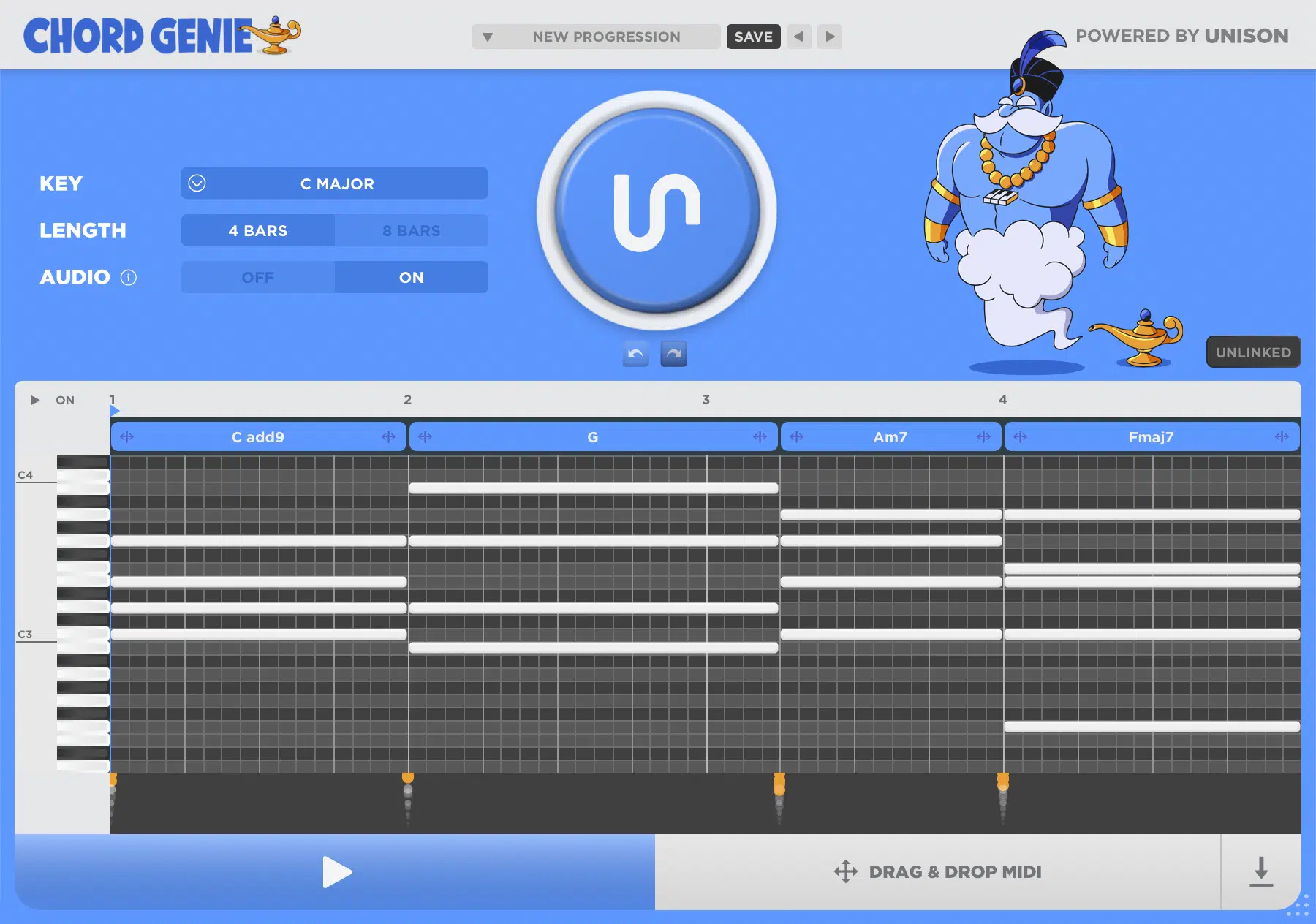
Chord and melody generators are AI tools that instantly create harmonically accurate progressions or top-line motifs based on your selected key, genre, and vibe.
They’re seriously perfect for destroying beat-block in the early stages of your music production process and getting the vibe down for any specific genre.
With MIDI Wizard, for example (which has a user-friendly interface) you can set the key to D# minor, choose the “Trap – Dark” preset.
And then, you’ll be able to instantly generate a 4-bar progression with minor 9ths, sus4s, and tension-building chromatic movements.
It gives you a launchpad that’s already proven for chart-topping music creation.
From there, you’re able to drag the MIDI into your DAW, like Ableton Live, change the tempo to 70 BPM, layer a pluck or pad with a short decay (around 300ms).
Then you could even reharmonize the chords using Chord Genie, which is the #1 new AI chord generator, for even more emotional voicings.
PRO TIP: You can easily try generating multiple chord sets, then switch one chord from each progression into a shared pool.
It’s a straightforward process, but it lets you create original melodies from different harmonic bases 一 dealer’s choice.
While, at the exact same time, training your ear on how to generate music with dynamic transitions using AI music tools.
Hybrid Technique: Chop AI MIDI Like a Sample
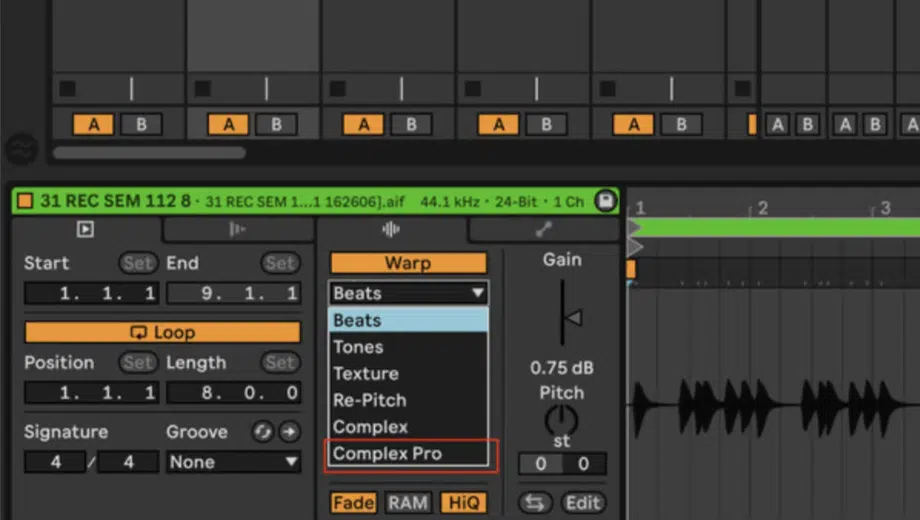
Once you generate a clean melodic phrase using an AI music generator, you can turn it into something super unique by resampling it and slicing it like an old-school sample.
My advice would be to:
- Bounce the 8-bar MIDI melody to audio
- Slice it into 1-bar chunks
- Pitch slice 3 down by -5 semitones
- Reverse slice 6
- Time-stretch slice 2 by 130% using Ableton’s Complex Pro warp mode
This will instantly create micro-variations and swing across the phrase.
From there, drop the slices into Serato Sample, map each chunk across your keyboard, and set each pad’s pitch to follow velocity (at 50% depth).
This gives you expressive control that mimics manual finger-drumming.
Then, make sure to low-pass the output at 8.5kHz to give it that lo-fi top-end rolloff.
NOTE: To really push this further, layer a vinyl crackle sample under your chops, then route both through Zen Master.
It can help you turn basic, sterile AI-generated music into a textured, emotional, and playable melodic loop that feels completely original and matches your overall vibe.
Taking Advantage of AI For Basic, Repetitive Tasks
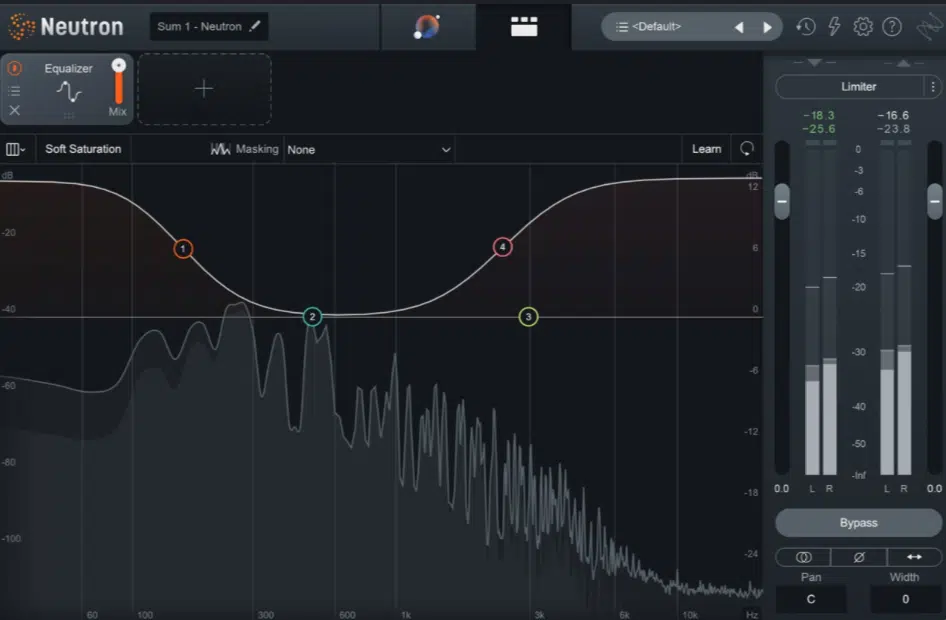
One of the most underrated parts of knowing how to produce music with AI is using it to take care of all the small, repetitive tasks that usually eat up your time.
This could be things like:
- EQ balancing
- Compression shaping
- Matching your track to a reference mix
You can use AI mixing tools like Sound Doctor to instantly analyze your session, then apply multi-band EQ curves based on a reference track.
For example, boosting 5.5kHz on vocals, dipping 200Hz in your snare bus, and tightening the low end around 40Hz on your kick without ever lifting a finger.
With Gullfoss, which is an intelligent EQ plugin, you’re able to set the Tame control at 40% and Recover at 35% to reduce masking between your synth leads and hi-hats…
It literally listens to the full spectral balance and makes tiny micro-adjustments in real time based on neural networks.
You can also load up REFERENCE, drop in a reference file from a commercial release, and the plugin will visually compare your EQ, stereo width, and LUFS.
It’ll show you exactly where your mix lacks punch or depth.
This makes it way easier to fix these issues while staying focused on the creative side of AI music production, which is key.
Generating Vocal Melodies with AI Music Production Tools
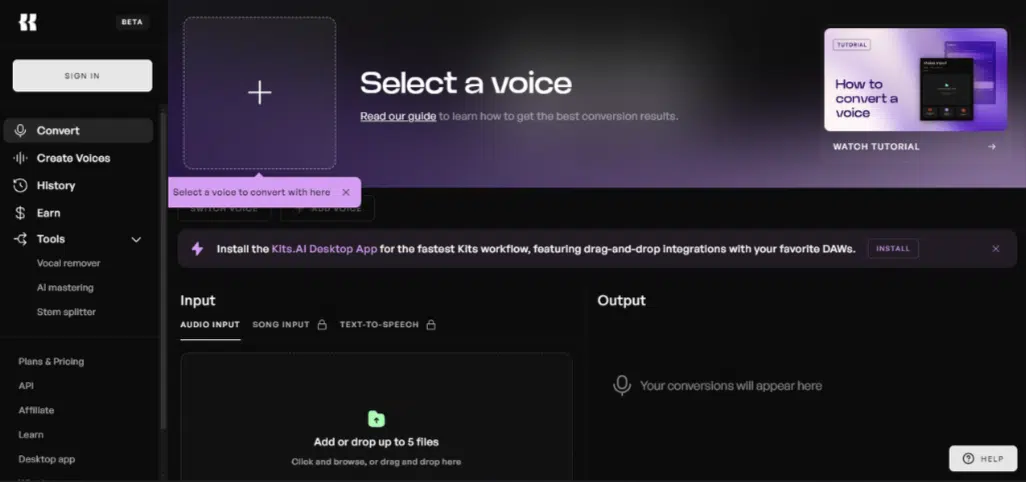
AI vocal melody generators allow you to easily generate lead vocal lines or toplines in whatever style you’d like, based on specific:
- Prompts
- Scales
- Mood
They’re perfect for when you’re stuck trying to create a memorable hook and elements along those lines.
When you create music with AI, you can use a tool like Kits AI, which lets you choose from dozens of AI-generated voice models.
Side note, if you’d like to learn all about the most realistic AI singing voice generators in the game, I got you.
Then, enter a simple melody idea (or even text), and it’ll sing it back to you in a chosen style 一 which is pretty cool and can add some extra flair to your beats.
For example, generating a sultry R&B topline in D minor at 80 BPM with airy inflection and subtle vibrato for your hook.
And, to shape the final vocal, you’re able to export the AI audio, chop it up in your digital audio workstation and formant-shift certain notes by +2 or -3 semitones.
Then, apply pitch-correction with Auto-Tune set to Retune Speed 10 and Humanize 25, and then blend harmonies underneath using two layered versions of the same AI voice.
Just make sure they’re pitched a third apart, which I’ve found to work best.
It’s what I like to do, but remember, when you’re learning how to produce music with AI it’s all about finding the groove that works best for your signature sound.
This is one of the most powerful ways to create melodies, experiment with tone, and unlock new songwriting ideas.
And it’s one of the top techniques for learning how to produce music with AI that doesn’t sound generic or robotic (essential for creating content like a professional) as well.
Process AI Outputs with Distortion, Resampling, or Time Warps
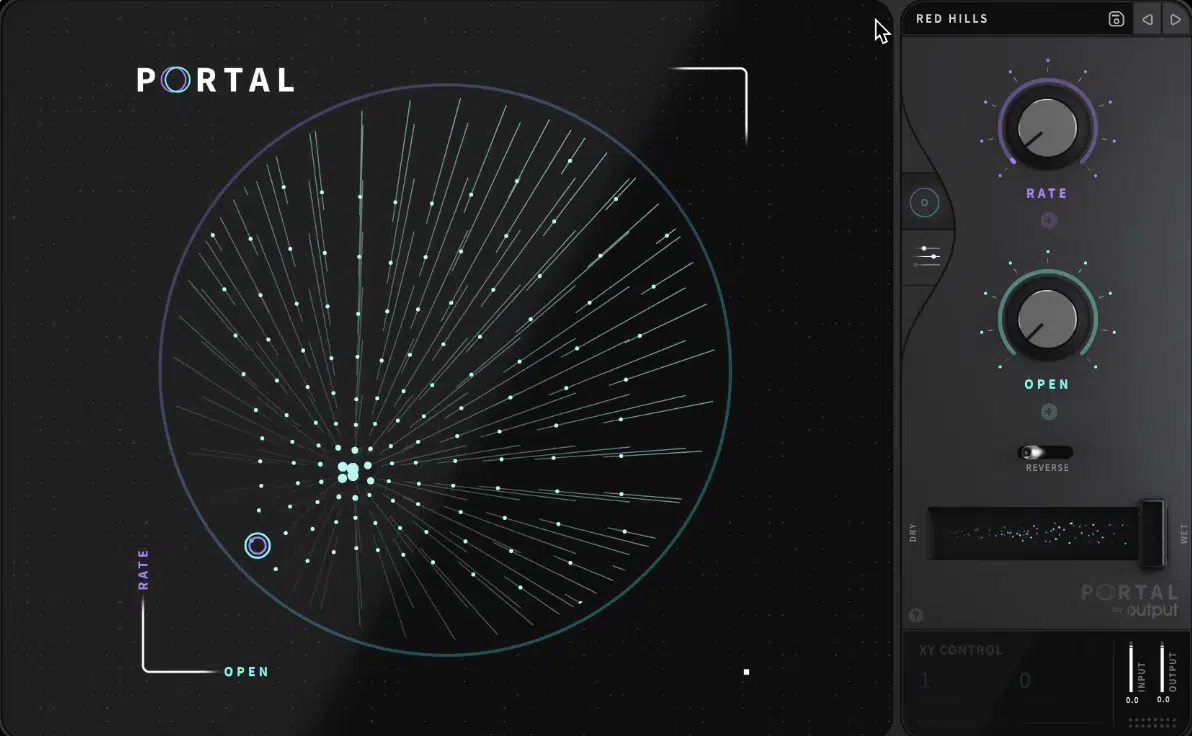
Once you’ve got your AI-generated music in place (whether it’s a melody, pad, or vocal) you can play around with it to kick things up a notch.
For example, you can try to run it through creative FX chains in Sound Doctor to dirty it up, twist the timing, or add movement, whatever works best.
One common technique is to bounce your AI stem to audio, load it into Portal by Output, and apply granular time-stretching with the Fracture preset.
Then, adjust the Grain Size to 180 ms and Density to 40% to get glitchy rhythmic bursts that drift in and out of time.
For distortion and saturation, you can throw the AI loop through Decapitator with the Style set to E, Drive at 5, and a high-pass filter at 130 Hz to warm up the mids without muddying your low end.
This helps AI melodies feel more alive and give them that beloved analog feel.
To finish it off, try pitch-shifting the audio up +7 semitones, then time-stretch it 150% using Ableton’s Complex Pro algorithm with the Formants slider pushed to 40%.
This transforms the loop into something emotional, airy, and uniquely yours while showing how flexible things get once you understand how to produce music with AI.
Pro Tip: Transforming and Reprocessing AI Material Creatively

One of the cleanest tricks to elevate your AI-generated music is to transform the clean output into something textured using:
- Resampling
- Saturation
- Layered automation
For example, you can resample an AI chord progression, load it into Granulator II (Ableton’s granular synth), set Grain Size to 0.10s, Spray to 0.30, and pitch it down -12 semitones for a gritty, ambient pad with rhythmic modulation.
From there, you’re able to automate a Drive knob on Decimort 2 from 0% to 55% over 8 bars to add analog-style bit reduction.
Then, filter out everything above 9.5kHz with a 24dB low-pass.
This gives you a lo-fi layer that sounds nothing like the original AI material and shows you exactly how far you can go when learning how to produce music with AI creatively.
Re-trigger AI Loops as One-Shots or Granular Bursts
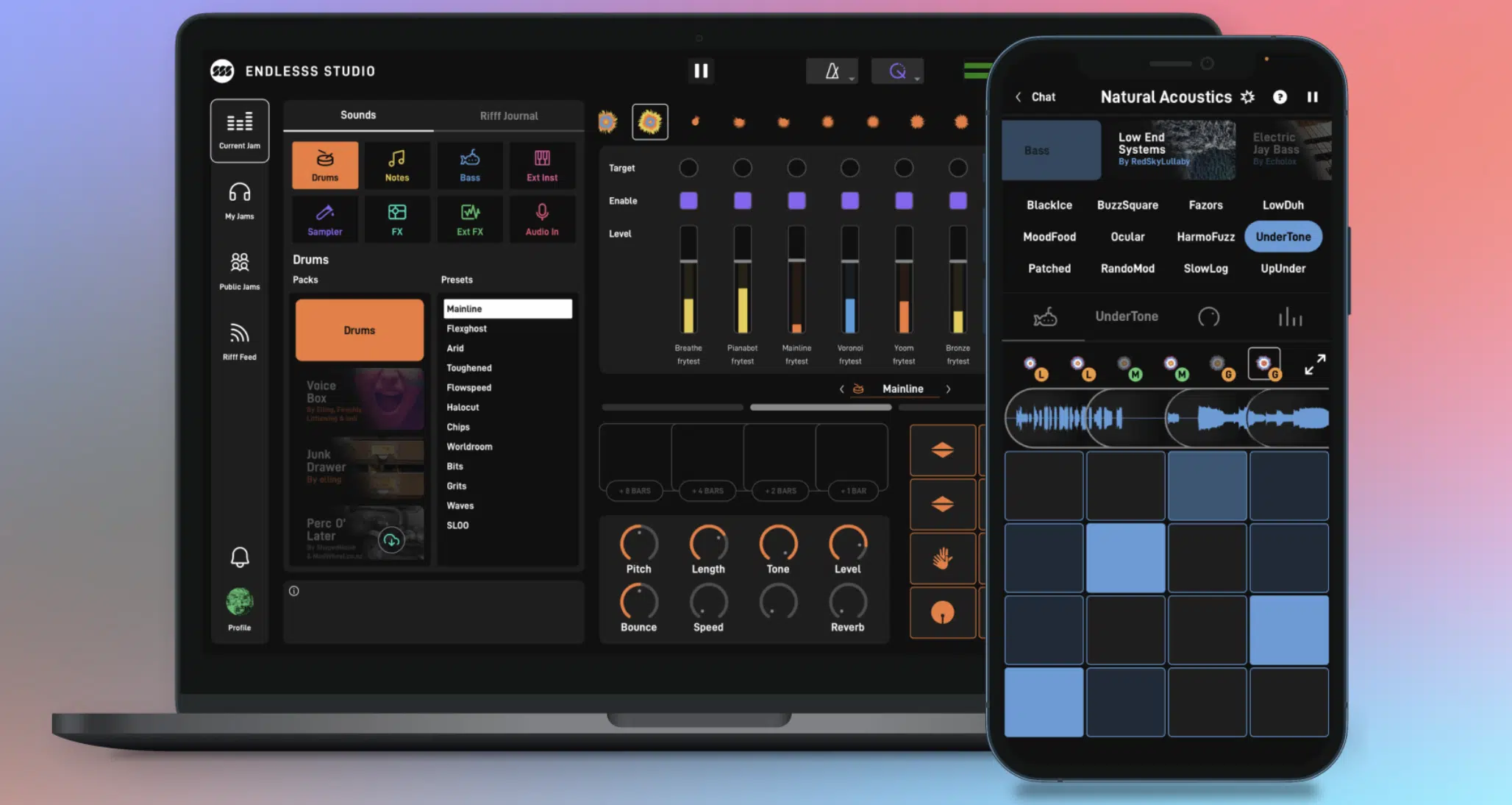
Another great way to bring new life to AI music is by chopping loops into micro-segments and playing them back as one-shots or short bursts.
This is great when you’re using generative AI and want more dynamic rhythm without adding a million new instruments.
Start by slicing an 8-bar AI melody into 1/8th-note chunks using your DAW’s slicing tool, then load those into Simpler or Battery and trigger them via MIDI.
Just make sure to set each pad to mono with 10ms attack and 150ms release for snappy percussive hits.
From there, you can randomly modulate pitch ±7 semitones with LFOs set to 1/4 rate, and automate panning ±50% across the stereo field.
Then, apply formant shifting using Little AlterBoy (or your favorite vocal formant/pitch shifting plugin) to give each hit its own vocal-like identity.
This technique is crazy powerful for building glitch fills, granular risers, or custom textures that can blow people’s minds.
And, side note, it’s a perfect example of how to produce music with AI doesn’t have to be passive 一 you’re actually playing the AI like an instrument.
Making AI Drums Hit Harder Than Human-Made Ones
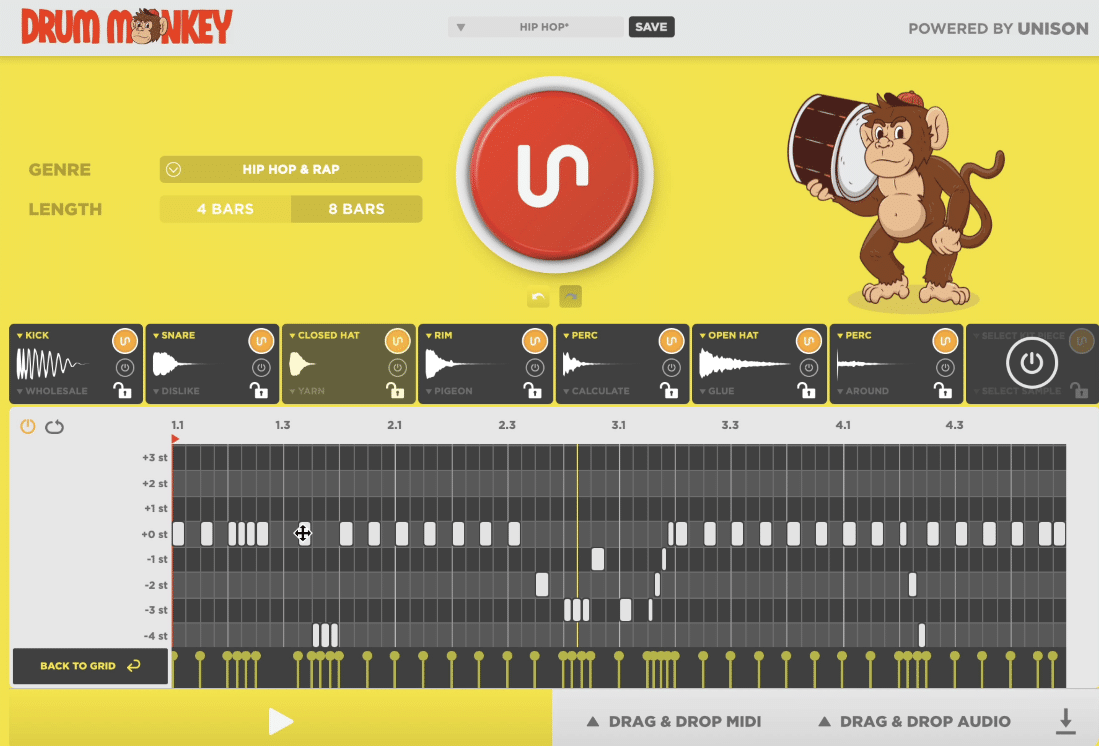
Most AI drum generators can give you a solid starting point…
But to make them slap like pro-level drums, you’ll need to reshape, layer, and tweak them for MAX punch, feel, and movement.
For example, using Drum Monkey, you can set the genre to “Boom Bap,” generate a 4-bar pattern at 90 BPM, and you’ll get kick, snare, and hi-hat MIDI all routed to different/individual channels.
From there, the real work begins.
You’ll want to replace the kick with a custom one-shot from Splice that peaks at -6 dB and hits strongest at 58Hz.
Then, layer a snappy clap from the Unison Essentials Drum pack on top of the snare for an extra high-mid cut around 2.5kHz.
NOTE: To tighten up the feel, apply transient shaping using Kilohearts Transient Shaper, boosting attack by +2.7dB on the kick, reducing sustain on the snare by -1.5dB, and slightly softening the hi-hat transient to avoid harshness.
For groove, set your swing to 62% on the hi-hats and offset every second snare hit by +10ms for a natural drag.
And, if needed, use Ableton’s Groove Pool with the MPC-60 template to lock in a more vintage bounce.
Bottom line, with the right shaping, swing, and layering, you’re able to turn any robotic AI loop into something that feels human and hits hard.
It’ll show just how far you can push things once you truly understand how to produce music with AI for professional (and unique) results.
Scoring, Sampling & FX with Tools That Think for You
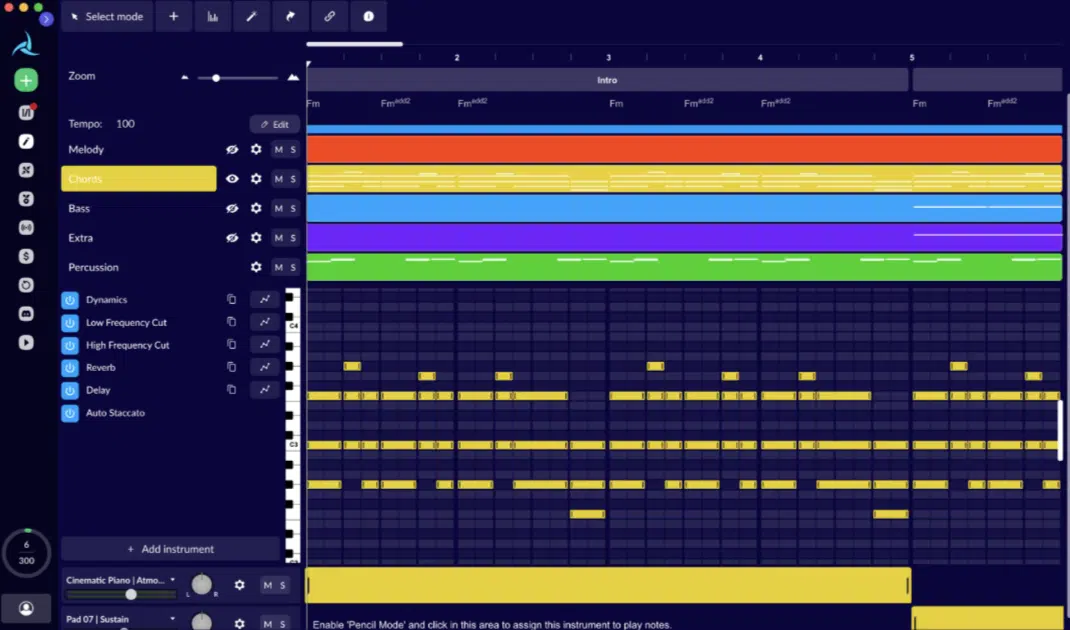
If you’re trying to add movement, tension, or cinematic depth to your track, AI-generated soundscapes and FX layers can bring in textures that actually feel alive.
Especially when you’re scoring content or building background music for commercial use.
AI tools like Soundraw or AIVA are designed for dynamic composition, so you’re able to generate entire soundscapes or underscore beds that change in response to:
- Tempo
- Key
- Track energy
Also with automation options that sync to your digital audio workstation grid.
For example, generating a 2-minute ambient texture in A minor using AIVA at 72 BPM and setting the dynamics curve to “cinematic soft rise” gives you a sweeping pad with subtle chord shifts.
It’s perfect for layering under slow builds or breakdowns in AI-generated songs/new songs.
If you’re working with AI-driven film score plugins, tools like Ecrett Music let you create dynamic game music that adjusts to scene triggers…
Setting a mood like “tense” with instrumentation style “orchestral hybrid” and a 4/4 time signature will generate layers that respond to player input or narrative changes.
To glue everything together and enhance your creative process, you can drop in an AI-powered reverb like Smart:Reverb and analyze existing music/your dry signal.
Then you can select the “Wide Space – Bright” profile with 25% depth and 8.2s decay to blend your FX bed into the final audio without clashing.
When used correctly, these AI music production tools help you create adaptive background music, ambient layers, and FX loops that react to the track.
It’ll show you exactly how to produce music with AI that goes far beyond loops and beats.
NOTE: If you want to see why producers using AI are making the sickest beats right now, and how you can too, I got you.
AI Music Generation (Advanced Techniques to Generate Music with AI)
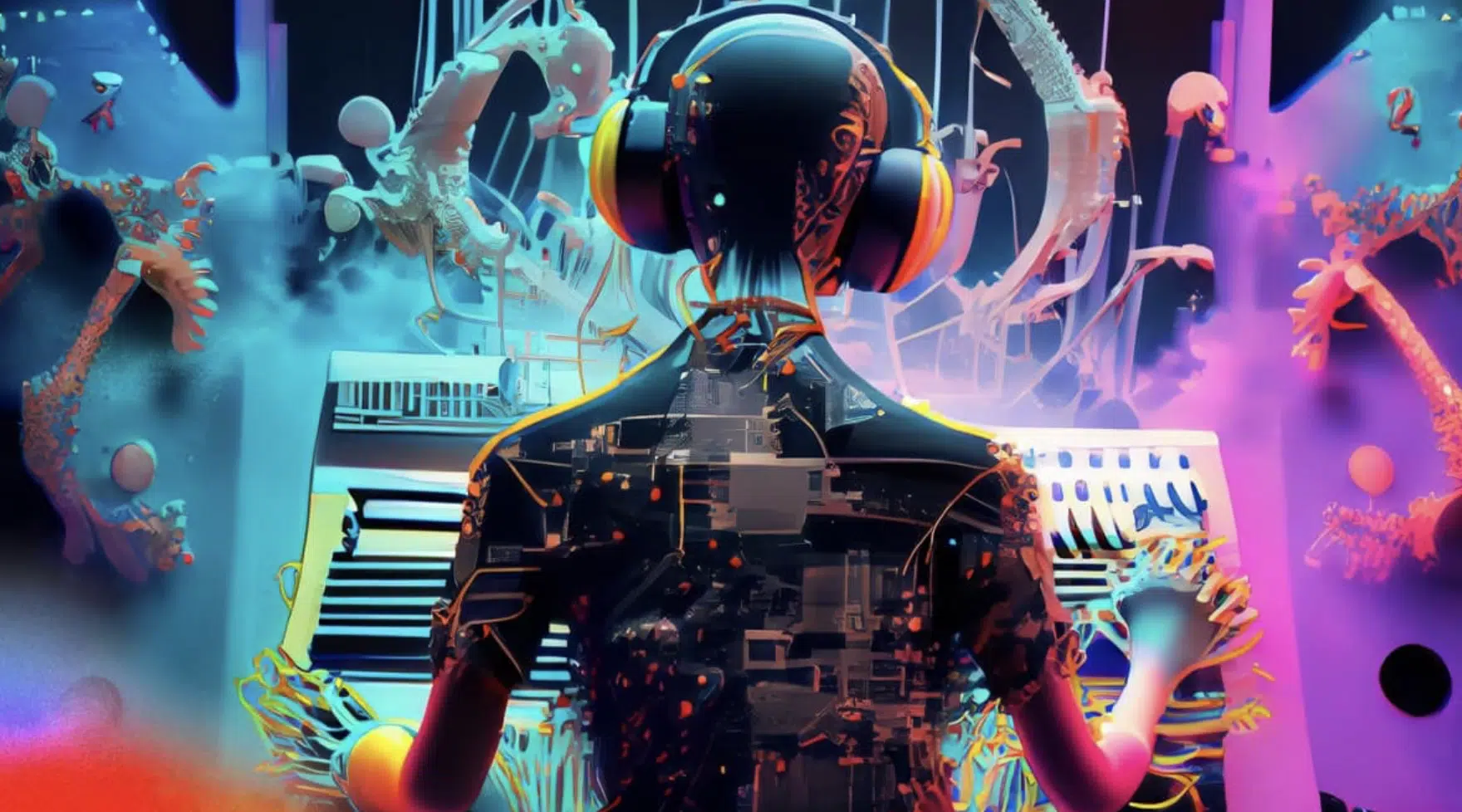
When it comes to advanced workflows (whether it’s for musical inspiration or to tweak your final sound), AI music generation is super useful.
It can be pushed way further than just auto-generating loops 一 especially when you’re stacking tools, training models, and feeding data from existing tracks into systems that respond to musical context.
One pro-level move is to load a full track into AI-powered mastering plugins like Curves AQ, then extract its spectral DNA to guide the tonal curve of your own project.
You can use settings like Target Match EQ at 65% intensity, Low-End Tilt at -1.5dB, and Dynamic Range Control at Medium for mix alignment without over-compression.
You’re also able to run an AI melody generator like MuseNet and specify “instrumentation: piano, synth lead, violin,” “genre: ambient trap hybrid,” and “length: 32 bars” to generate music that evolves properly.
Then, resample it into granular layers using Tactic or Devious Machines Texture.
Also, music producers/human musicians diving deeper into how to produce music with AI use neural networks trained on their own stems a lot of the time.
This builds AI models that recompose parts in their signature style, and you can easily do that as well, no problem.
Side note, feeding 50+ stems from original tracks into a machine learning algorithm lets you generate music that reflects your own sound, not a preset vibe.
And when you blend these results with AI tools for lyric writing, rhythmic modulation, and dynamic scene scoring, you’re able to turn raw AI-generated music into custom music in seconds.
Music that stands up across all streaming platforms with no copyright strikes or whack results, I might add.
Just don’t forget about tweaking microdetails like stereo width automation or formant morphing, of course.
Final Touches: Mixing & Mastering with AI
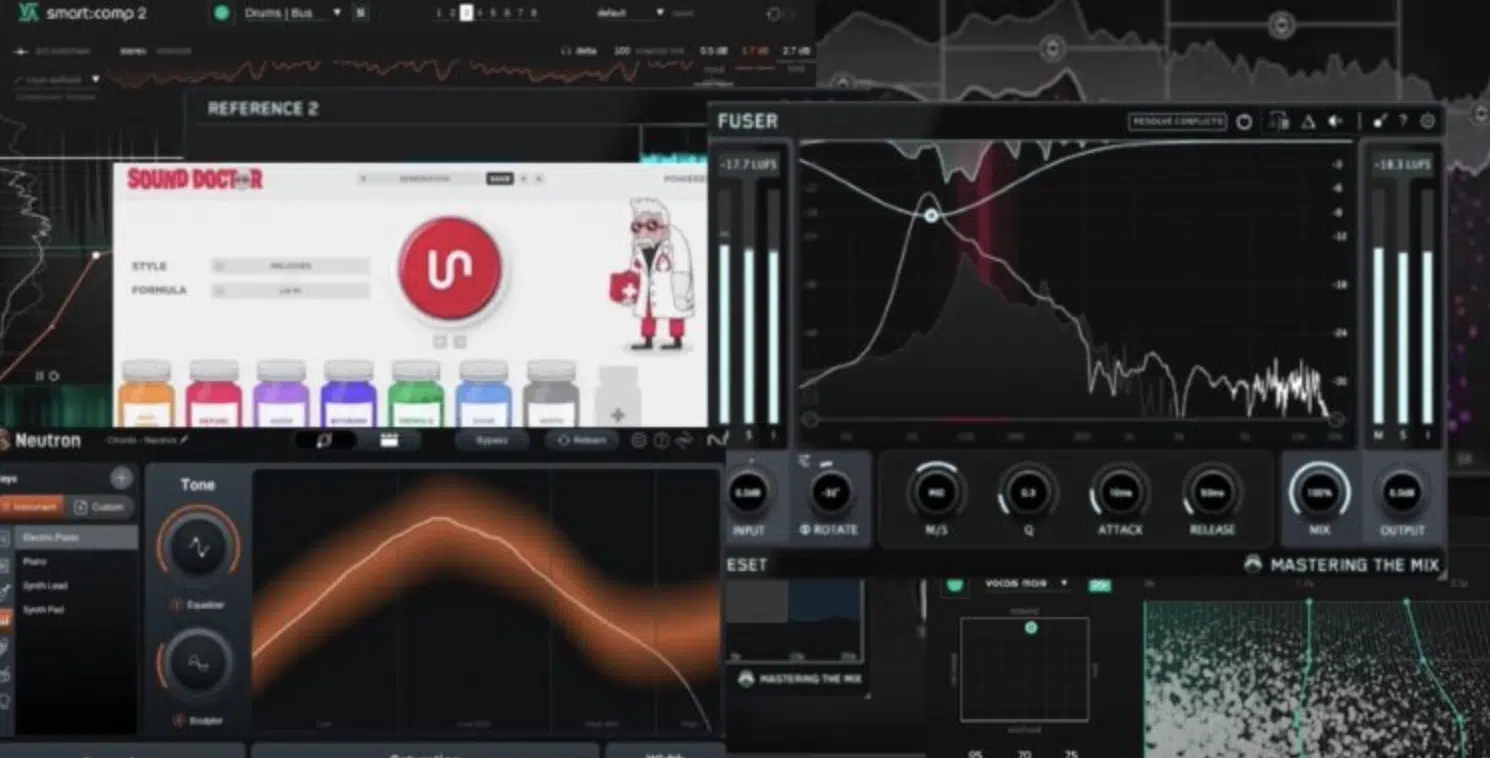
Once your track is arranged with generative AI and your stems are balanced, you’re almost there.
However, knowing how to produce music with AI professionally means dialing in the mixing stage and mastering stage with precision 一 not just loudness, but:
- Sound quality
- Balance
- Platform readiness
You can start by using Sound Doctor to auto-detect harsh frequencies in your vocals, pads, or leads.
For example, pulling down a sharp 3.4kHz peak on your main vocal by -2.3dB while boosting air at 11kHz by +1.8dB.
This can help your custom music tracks cut through the mix without sounding brittle.
From there, you’re able to drop your entire stereo bus into iZotope Ozone 11, set the Maximizer threshold to -8.5dB, ceiling at -1.0dB, and target a dynamic LUFS of -14 for Apple Music.
Just remember to reference your track against a commercial mix using the built-in Reference Match EQ at 45% intensity.
And, if you’re prepping for streaming platforms, make sure to toggle Ozone’s “Streaming Platform Optimizer” and select Spotify, YouTube, and Apple Music presets.
This will tweak your final audio to avoid clipping or distortion post-upload, especially around 160Hz and 9kHz where most platform compression hits hardest.
Next, you can chain AI-powered tools like Sonible smart:comp 2 with any transient enhancer and Gullfoss in “Tame + Recover” mode at 30% to create a mastering chain that reacts dynamically to your full mix, while preserving punch and stereo image.
This is vital for royalty-free, AI-generated songs made for commercial use.
Also, to lock in the tonal curve, you can use Curves AQ in Static + Dynamic mode, adjust the MixSense Tilt to +1.5dB Warmth, and offset the low end by -1.2dB at 48Hz.
Then, apply a stereo width boost of +15% above 6kHz.
This lets you finalize your original songs/music generated with clarity, depth, and vibe that works across different genres (e.g., hip-hop, trap, lo-fi, RnB, EDM, etc.).
NOTE: Once all of that’s done, always export your final audio at -1.0dBTP, 24-bit WAV, 44.1kHz, and double-check your copyright ownership metadata before submitting to most platforms because you don’t want any issues.
Because, remember, real producers not only finish strong, but make sure their music generation is built for perfect music creation, clean delivery, and long-term protection.
Final Thoughts
Remember, when you’re learning how to produce music with AI, it isn’t about replacing your creativity, it’s about expanding what you’re already capable of.
With the right AI music tools, you can move faster, make smarter decisions, and build legendary tracks that actually hold up in any professional setting.
Whether you’re writing hooks, designing drums, or automating the mix, AI gives you the freedom to focus on what really matters 一 the emotion/energy behind your sound.
Trust me, the producers who are thriving nowadays won’t be the ones resisting change, they’ll be the ones who learn how to produce music with AI on their own terms.
You’ve now got the blueprint to do just that, with workflows, settings, and strategies that take your music further than ever (more than you ever thought even).
So don’t wait, go ahead and experiment, always push boundaries, and turn these AI tools into your own secret weapon.
This way, you can stay ahead of the game and blow the competition out of the water.
Until next time…






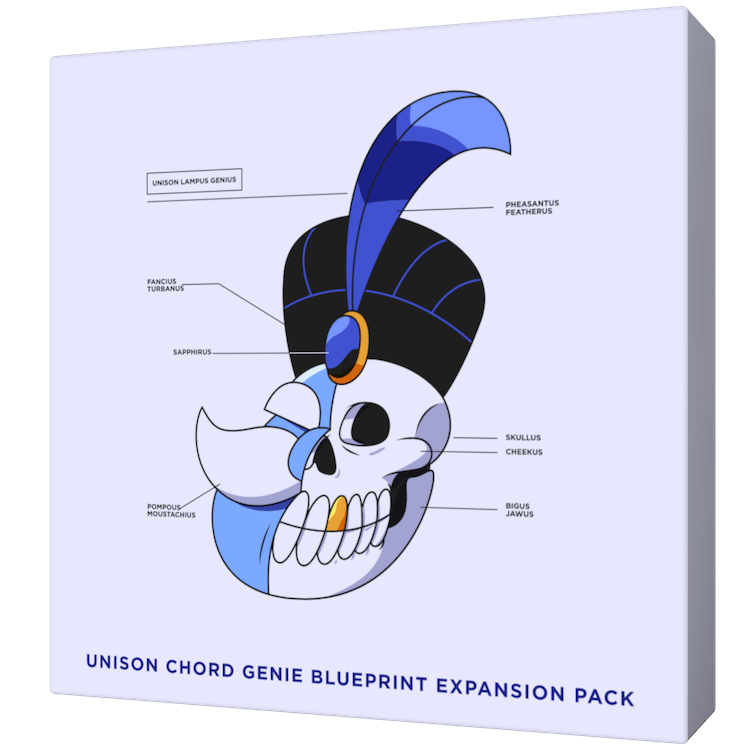
Leave a Reply
You must belogged in to post a comment.